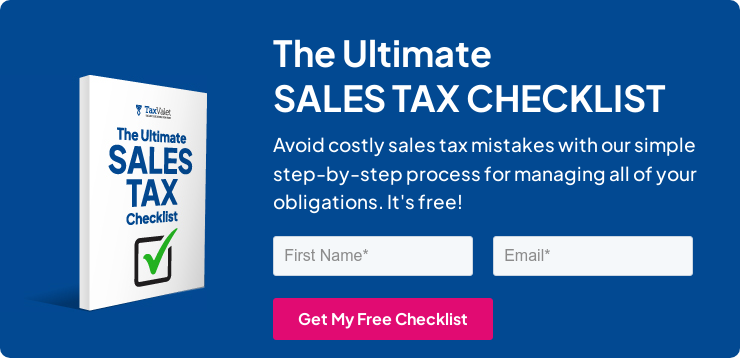Let’s walk through what changed, why it matters, and how to make sure your store’s tax setup doesn’t fall behind.
What Changed in Shopify’s Sales Tax Settings on July 14, 2025?
As of July 14, 2025, Shopify Basic Tax is no longer available to new or existing merchants that collect US sales tax—unless you were an existing merchant already using it before that date.
Here’s the key detail:
- New merchants that collect US sales tax can no longer choose Basic Tax
- Existing merchants who weren’t already using it also can’t upgrade or downgrade to Basic Tax
- If you collect US sales tax and you were already using Basic Tax before July 14, 2025, you can continue using it for now
This wasn’t a deprecation. Basic Tax is still supported—but it’s now locked down to the group of US-sales-tax merchants who already had it active before the cutoff.
Shopify is now pushing these sellers to choose between two active options:
- Shopify Tax (automated, modern)
- Manual Tax (manual rates and rules)
|
IMPORTANT NOTE: This change only affects merchants collecting US sales tax. Basic Tax is still available for new and existing merchants in other regions, including Canada, the European Union, and the United Kingdom. If you’re selling outside the U.S., your tax service options may remain unchanged.
|
Shopify Tax vs Manual Tax: What’s the Difference?
Shopify phased out new access to Basic Tax to promote better accuracy and compliance. It simply wasn’t keeping up with modern tax laws. Shopify Tax, on the other hand, offers detailed features like rooftop-rate accuracy, exemption rules, and automated insights—far beyond what Basic or Manual Tax can do.
| Option | Key Features | Cost |
| Shopify Tax | Rooftop-level rate accuracy, automated filings, tax holiday rules, nexus insights, and more |
Free until $100K/year, then small per-transaction fees in applicable states (see pricing details). |
| Manual Tax |
You define tax rates manually, including overrides, state rules, etc. |
Free forever |
| Basic Tax |
Older option with ZIP-code level automation. Now closed to new and existing merchants not already using it. |
Legacy—still active, but frozen for current users only |
Who’s Affected by the Shopify Basic Tax Sunset?
This update mostly affects:
- New Shopify stores launched after July 14, 2025,that collect US sales tax
- Existing US merchants who are not already using Basic Tax for sales tax (you can’t activate it now)
- Merchants unsure whether their current sales tax setup is keeping up with their growth
To be clear: if you're already on Basic Tax, you can stay there. But if you’re not already on it, and you're collecting US sales tax, there’s no going back—Shopify has closed it off permanently.

Why Shopify Sales Tax Settings Matter More Than You Think
Let’s say you’re a fast-growing apparel brand selling online. You just crossed $150,000 in revenue across 10+ states. You set up sales tax ages ago and haven’t thought about it since.
But now:
- You might owe tax in several states due to economic nexus thresholds
- You could be using outdated or inaccurate manual overrides
- You’re not filing where you should be—and you may not even know it
This is where many Shopify sellers unknowingly fall out of compliance. Basic Tax once covered some of these gaps, but it’s no longer available. Manual Tax leaves everything on your shoulders. And Shopify Tax, while helpful, still requires you to handle filings and state registrations yourself (not to mention, pay for the service over and above what you’re already paying to Shopify).
If you're selling into multiple states—or planning to—it’s time to make sure your sales tax setup is built to scale.
👉 Not sure which states Shopify collects in for you? Here’s their state-by-state breakdown.
Shopify Sales Tax Getting Complicated? Let TaxValet Handle It All.
If this change has you questioning your setup, you're not alone. But this isn’t just about one new toggle—it’s about how your business manages sales tax at every stage.
At TaxValet, we don’t just help with a quick review—we take sales tax completely off your plate. For good.
That includes:
- Identifying where you owe sales tax and getting you registered
- Reviewing and setting up your Shopify (or other e-commerce) tax settings
- Filing returns in every state you need to
- Keeping you compliant as your business—and tax laws—change
We work with e-commerce brands who are growing fast and don’t want to waste time second-guessing every tax setting and threshold.
Disclaimer: Our attorney wanted you to know that no financial, tax, legal advice or opinion is given through this post. All information provided is general in nature and may not apply to your specific situation and is intended for informational and educational purposes only. Information is provided “as is” and without warranty.
What you should do now
- Get a Free Sales Tax Plan and see how Tax Valet can help solve your sales tax challenges.
- Read more articles in our blog.
- If you know someone who’d enjoy this article, share it with them via Facebook, Twitter, LinkedIn, or email.